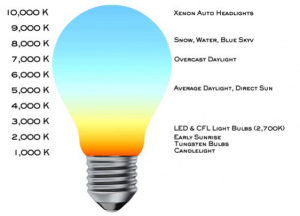“Talk Nerdy To Me”
#Light #Lights #Mental Health
Light, amount of light, and type of lights all impact your general and mental health.
YOUR SCREENS & YOUR EVENING HOURS: The benefits of 7 to 9 hours of sleep a night include stress relief, improved memory function, and reduced risk of chronic diseases. Consistent sleep durations less than 7 hours are linked with increased risk for cardiovascular disease, depression, learning and memory problems.(1) The light emitting devices often used within the hour(s) prior to bedtime (television, laptop, mobile phone) suppress the production of melatonin, the hormone secreted that impacts our sleep and wake cycles.(1) There are a number of options to reduce this impact to our sleep cycles. Four examples follow here. Avoid excessive amount of the short-wavelength ‘blue-light’ within the hours prior to bedtime. Use of glasses/goggles in the evening hours that filter short-wavelength ‘blue-light’. Adjust settings (available on some LED Smart TVs) to change light colors. The use of applications similar to f.lux that adjust the light color of displays (mobile phones, etc.) based upon time of day.(1)
LEARNING: The Kongsgardmoen School in Kongsberg, Norway is utilizing human-centric lighting to improve the learning environment. The school day starts with cool white light to reduce sleepiness and transition the students into daytime mode. After the start of the day the teachers have the ability to adjust the light levels based upon type of activity.(2) Warmer light colors are used to relax students, and cool-white colors can be used to increase energy levels, for example after lunch.(2) A similar program is being implemented in Des Moines, Iowa at Ruby Van Meter and Smouse Opportunity Schools. The intent is to provide the best practical learning environment.(2)
CIRCADIAN RHYTHMS: Biological rhythms that cycle every 24 hours are known as circadian rhythms. To remain in sync with the 24-hour solar day the body relies primarily on light.(4) Dr. Mariana G. Figueiro, and expert in light and health research, has been involved with multiple studies evaluating the use of cool-white light levels for daytime stimulation, and warm-white low light levels for evening stimulation.(4) These studies discuss the impacts/benefits of light therapy, a non-pharmacological intervention, for Alzheimer’s Disease and Related Dementia (ADRD) and Delayed Sleep Phase Disorder (DSPD).(4)
COLOR TEMPERATURE?: What does color temperature mean? Color Temperature is the measure of the color spectrum that is found in light (pure white, yellow, red, and blue). Color temperature is measured in degrees Kelvin.(3) Below is an image illustrating temperature range and sample of light source.

SOURCES
- Chris Kresser
- Jennifer Baljko, Lighting Up Learning, 10/6/15
- EagleLight LED University
- Lighting Research Center

